Primary Structure of Glycans by NMR Spectroscopy
- PMID:36622423
- PMCID: PMC9912281
- DOI: 10.1021/acs.chemrev.2c00580
Primary Structure of Glycans by NMR Spectroscopy
Abstract
Glycans, carbohydrate molecules in the realm of biology, are present as biomedically important glycoconjugates and a characteristic aspect is that their structures in many instances are branched. In determining the primary structure of a glycan, the sugar components including the absolute configuration and ring form, anomeric configuration, linkage(s), sequence, and substituents should be elucidated. Solution state NMR spectroscopy offers a unique opportunity to resolve all these aspects at atomic resolution. During the last two decades, advancement of both NMR experiments and spectrometer hardware have made it possible to unravel carbohydrate structure more efficiently. These developments applicable to glycans include, inter alia, NMR experiments that reduce spectral overlap, use selective excitations, record tilted projections of multidimensional spectra, acquire spectra by multiple receivers, utilize polarization by fast-pulsing techniques, concatenate pulse-sequence modules to acquire several spectra in a single measurement, acquire pure shift correlated spectra devoid of scalar couplings, employ stable isotope labeling to efficiently obtain homo- and/or heteronuclear correlations, as well as those that rely on dipolar cross-correlated interactions for sequential information. Refined computer programs for NMR spin simulation and chemical shift prediction aid the structural elucidation of glycans, which are notorious for their limited spectral dispersion. Hardware developments include cryogenically cold probes and dynamic nuclear polarization techniques, both resulting in enhanced sensitivity as well as ultrahigh field NMR spectrometers with a1H NMR resonance frequency higher than 1 GHz, thus improving resolution of resonances. Taken together, the developments have made and will in the future make it possible to elucidate carbohydrate structure in great detail, thereby forming the basis for understanding of how glycans interact with other molecules.
Conflict of interest statement
The authors declare no competing financial interest.
Figures

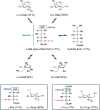
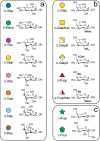
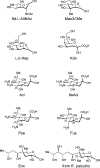
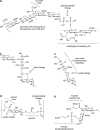





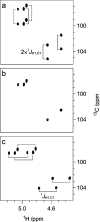


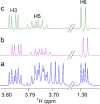
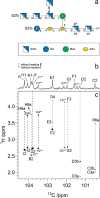
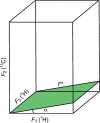
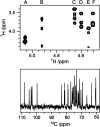
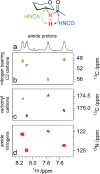




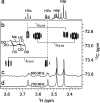

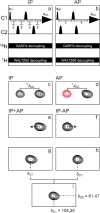
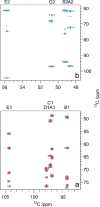
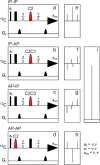



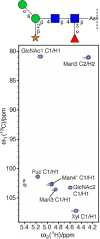



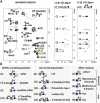
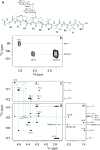
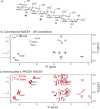
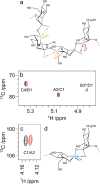
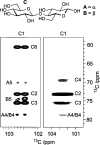

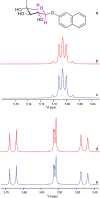




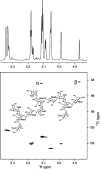
References
- Flynn R. A.; Pedram K.; Malaker S. A.; Batista P. J.; Smith B. A. H.; Johnson A. G.; George B. M.; Majzoub K.; Villalta P. W.; Carette J. E.; et al. Small RNAs Are Modified with N-Glycans and Displayed on the Surface of Living Cells. Cell 2021, 184, 3109–3124. 10.1016/j.cell.2021.04.023. - DOI - PMC - PubMed
- Essentials of Glycobiology, 4th ed.; Varki A., Prestegard J. J., Schnaar R. L., Seeberger P. H., Cummings R. D., Esko J. D., Hart G. W., Aebi M., Mohnen D., Kinoshita T., et al., Eds.; Cold Spring Harbor: New York, 2022. - PubMed
- Urashima T.; Asakuma S.; Messer M.. Milk Oligosaccharides. In Comprehensive Glycoscience; Kamerling J. P., Ed.; Elsevier, 2007; Vol. 4, pp 695–724.
Publication types
LinkOut - more resources
Full Text Sources
Other Literature Sources
Molecular Biology Databases
